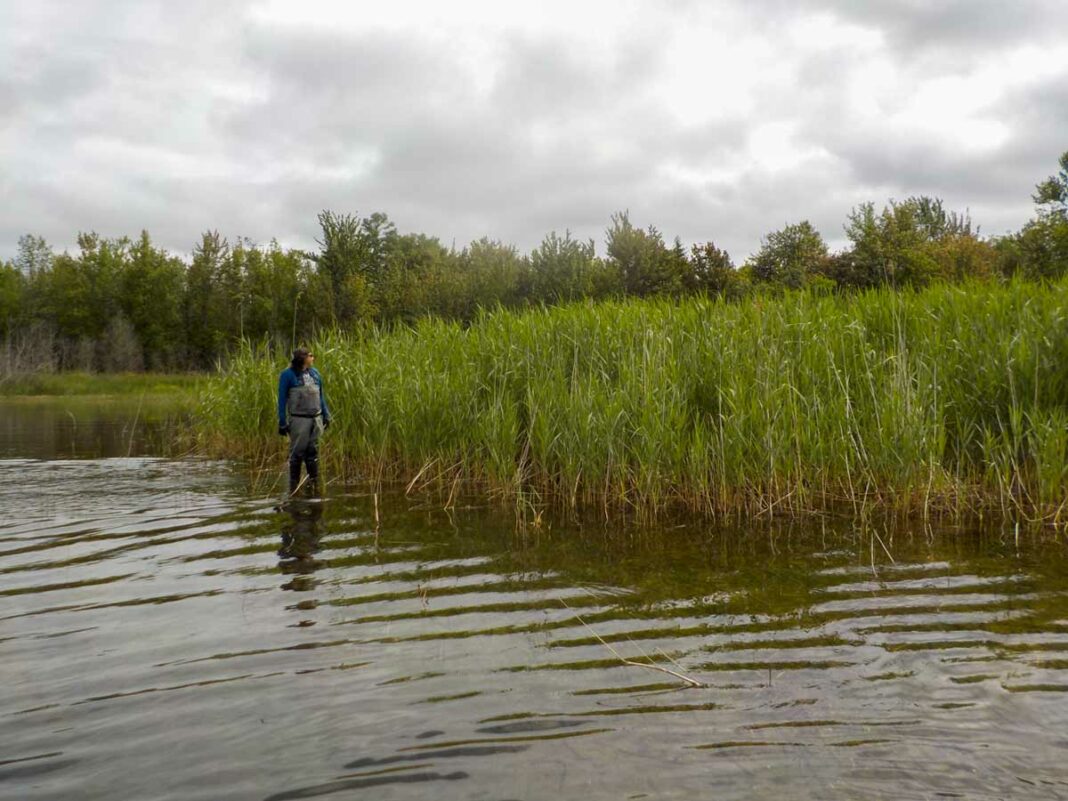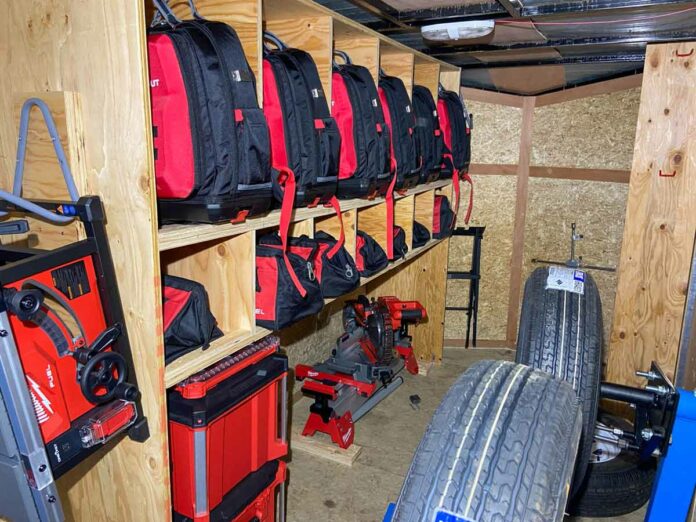MANITOULIN—While a lot of work has been done to control phragmites on Manitoulin Island over the past eight years, there is still a lot more work to do, says Manitoulin Phragmites project Coordinator Judith Jones.
“We still have a very large area to cover,” said Ms. Jones. “We have left some of the biggest swaths of areas with phragmites for last. The Lake Wolsey area will be a multi-year project before it will be under control. And there are a lot of areas in Wiikwemkoong.” Along with the Lake Wolsey area, the Wiikwemkoong area includes from the northern end of South Bay between Clover Valley and South Bay. “These are big areas and multi-year projects as well.”
“So, there are still lots of sites on Manitoulin that have phragmites, including sites on Western Manitoulin we haven’t gotten to at all yet,” said Ms. Jones. “The big project for 2024 will be in Wiikwemkoong, and in 2025, Western Manitoulin.”
Phragmites is a tall invasive grass that has been spreading aggressively on shorelines and in wetlands in our area. Phragmites grows into dense patches that can eventually wipe out all other vegetation. It is a serious threat to wildlife and fish habitat, recreation, tourism, property values and aesthetics. Southern Ontario has lost thousands of hectares of natural habitat to this highly invasive species.
“The Manitoulin Phragmites project was started to make sure this does not happen on Manitoulin,” said Ms. Jones in the review of the 2023 project.
Ms. Jones explained that there was a scaled back work project in 2023. The project didn’t receive Ontario funding and while they received notice of federal funding in July, the project didn’t get signed paperwork until December.
“We were able to work, thanks to invaluable support form Manitoulin Transport, Manitoulin Streams, and many dedicated volunteers. We didn’t have a full-time field team, but veteran phraggers Rad Mroz and Sheila Madahbee worked casual, which is the wrong word given how hard they worked,” reported Ms. Jones.
“With no team, I focused on work I could do alone, mainly working on sites where herbicide was appropriate (dry ground, ditches, finished sites with a few remaining stems). When there were other people working, we concentrated on maintaining sites in progress to not lose the gains made last year. Given the challenges, I’m happy to say we had a very successful year!” continued Ms. Jones.
She explained a total of 23 sites were worked on (nine species at risk [SAR] habitats, seven roadside ditches, two other shorelines). A total of 59.4 hectares of habitat was controlled or maintained (52 hectares in SAR habitats) with 40 hectares at Lake Wolsey. Over 100 kilometres of roadside ditches were surveyed, 88 kilometres of shoreline surveyed (all of Lake Manitou plus Jacko Bay and Sims Bay). There were seven hectares of inland wetland surveyed, with two additional new sites surveyed for phragmites work planning, two surveys done to monitor SAR and two house calls made to check sites, with no phragmites found.
Manitoulin Phragmites Week went ahead in 2023. “I reminded our 47 phrag watchers to check their sites. Almost everyone responded!” reported Ms. Jones. “Newspaper ads urged people to look for phrag and to report it to us. We made a few house calls to follow up.” She made a presentation to 83 enthusiastic people at the Lake Manitou Area Association which led to many new contacts and a new volunteer who took us by boat to survey all of the Lake Manitou shoreline.
“Work at Lake Wolsey in 2023 was full steam ahead. We contracted the Invasive Phragmites Control Centre’s two-person spray crew to spray all the patches of phrag standing on dry ground on the municipal shoreline,” continued Ms. Jones. “I thought this would be a multi-year task, but they were able to get to all the dry-land phrag in our entire work area! Our people maintained the in-water areas worked in 2022. If all goes as planned, we hope to have the entire 60+ hectares of shoreline under control when the project ends in 2025.”
Ms. Jones told the Expositor, “We are looking for some new team members to start in mid-May, especially if they want to work in Wiikwemkoong. Phragging is hard work but very rewarding, and we go to some nice places. If people are interested, email a resume.” She pointed out that because of the travel challenges, phragmites team members must be living on Manitoulin Island during the summer and must have a valid driver’s licence.
Ms. Jones called on local residents to keep an eye out for phragmites at home. “Contact us if you have some. We’ll help you figure out what to do and get you started. Report phragmites locations to us. Tell us where you find it so we can take action.”
Ms. Jones also encourage everyone to join in on Manitoulin Phragmites Week, July 16-21. “We can host a work bee in your area or make a house call to your property.”
To contact the Manitoulin Phragmites Project, you can send mail to P.O. Box 278, Manitowaning, ON POP 1NO, call (705) 859-1027 or manitoulinphrag@yahoo.com or visit Facebook.com/manitoulinphrag.





